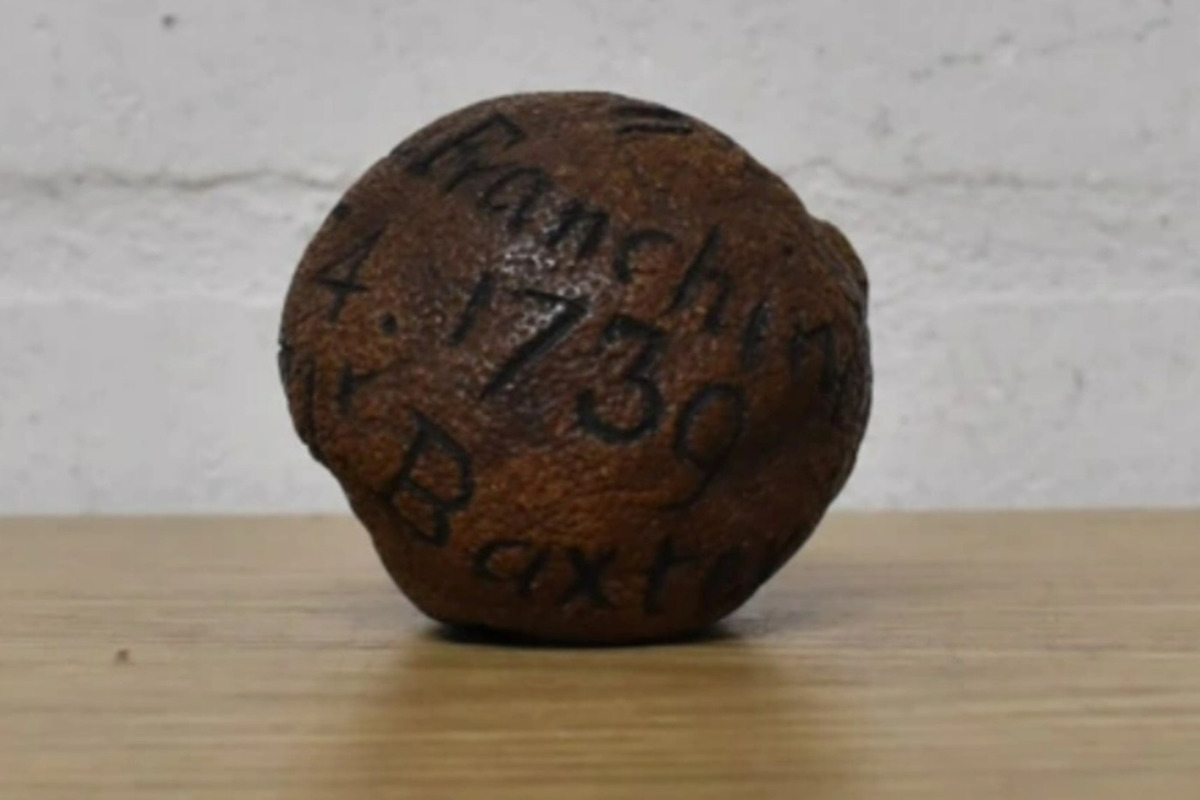The secret of an ancient lemon that sold for a million
[ad_1]

The most unpredictable art sales of recent years
The art market is capricious and whimsical. It either swells like a soap bubble or bursts, rapidly dropping prices for seemingly worthwhile works of art. Nevertheless, sales for fabulous sums regularly occur: objects and paintings that appeared by chance, and not through long trials and errors, creative searches and painstaking work, go under the hammer. Here are a few such stories – with a high price indicator.
Recently, at Christie’s auction, a work with an obscure image was sold for as much as $1.7 million. The secret of success is that the drawing was created by the legendary Beatles, and in full force. The story takes us to 1966 – to Tokyo. John Lennon, Paul McCartney, Ringo Starr and George Harrison arrived in Japan in July to perform several concerts. There were several days between appearances on stage, and the Japanese authorities decided, out of harm’s way, to hide the star group in the presidential suite of the Hilton hotel. They say the reason for this was the threats received against the Beatles. Having nothing else to do, they decided to draw. Luckily, I had acrylic paints and handmade Japanese paper on hand. Then the musicians painted an abstraction and called it “Image of a Woman” (76 cm × 100 cm).
The only painting created by The Beatles in collaboration with the full band was put up at a charity auction and sold for a reasonable amount to the president of the group’s Japanese fan club, Tetsusaburo Shimoyamo. 30 years later, he resold the work to an art dealer for 191 thousand dollars. In 2012, the painting appeared for public sale, but was sold at the Philip Weiss auction in New York for a lesser amount – $155,250. Some 12 years have passed, and the price has increased significantly – this February it was sold for $1.7 million (£1.4 million) in London.
And here’s another fresh art story – about a stale fruit. The other day, in the same London, a 285-year-old lemon went under the hammer. It was accidentally found in an old chest, which the owner decided to put up for auction. When a 19th-century wooden casket, decorated with elaborate gilded decoration, was photographed at an auction house, dried fruit was discovered in the back drawer. Yes, not a simple one, but with an inscription carved with a knife: “Gift to Mr. P. Lou Francini, November 4, 1739, from Miss E. Baxter.” Thus, it was possible to establish the exact age of the lemon, which turned out to be older than the chest. As a result, it went under the hammer for 1.7 thousand dollars (£1.4 thousand), and the chest went for only 32 pounds.
Anything can happen on the art market. If the lot, as they say, is properly packaged, in the sense of being promoted, then you can sell even an indoor flower or air for a high price. And it’s not a joke. In 2021, Raphidophora four-seeded went under the hammer in New Zealand. A rare plant with a white color and eight leaves was sold for almost 20 thousand dollars. It has become the most expensive indoor plant in the world.
Around the same time, an invisible sculpture was sold at auction in Italy, which is the pure fantasy of the author, artist Salvatore Garau. He called his intangible work “I Am.” And he stated that although the sculpture is not visible, it exists. Essentially, René Descartes paraphrased: “I think, therefore I am.” According to the author, the sculpture is created from the energy and power of thought and occupies an area of 1.5 by 1.5 meters. All that remains is to take his word for it. However, someone believed it and bought the ghostly monument for 15 thousand euros.
[ad_2]
Source link






